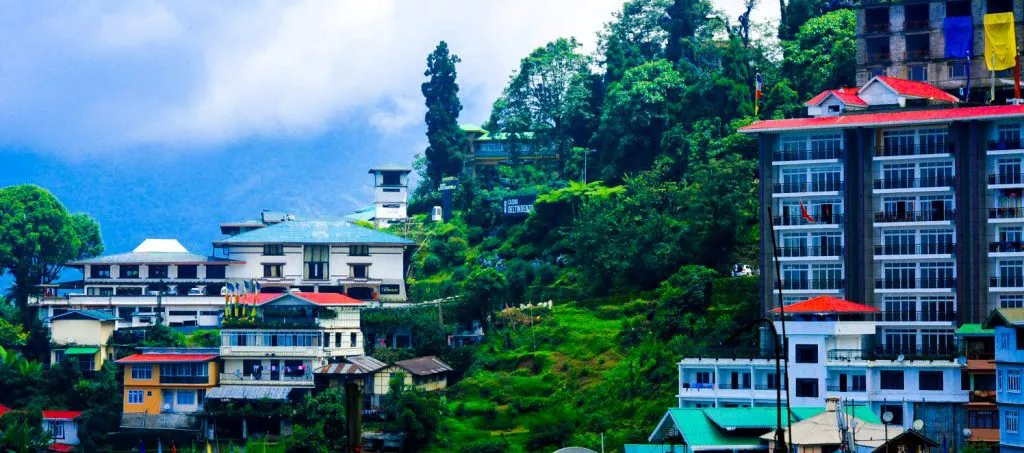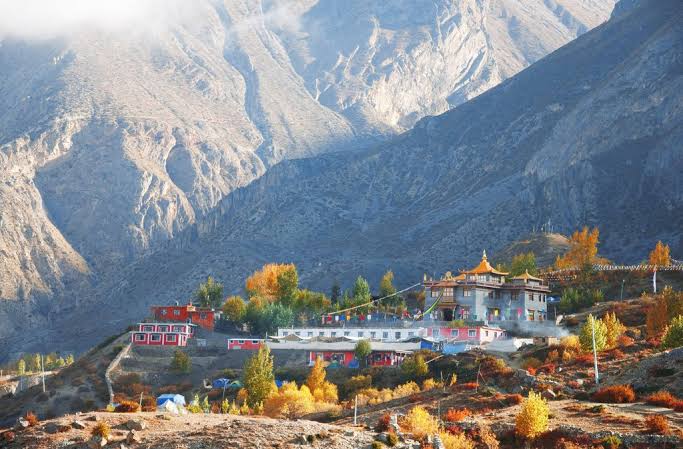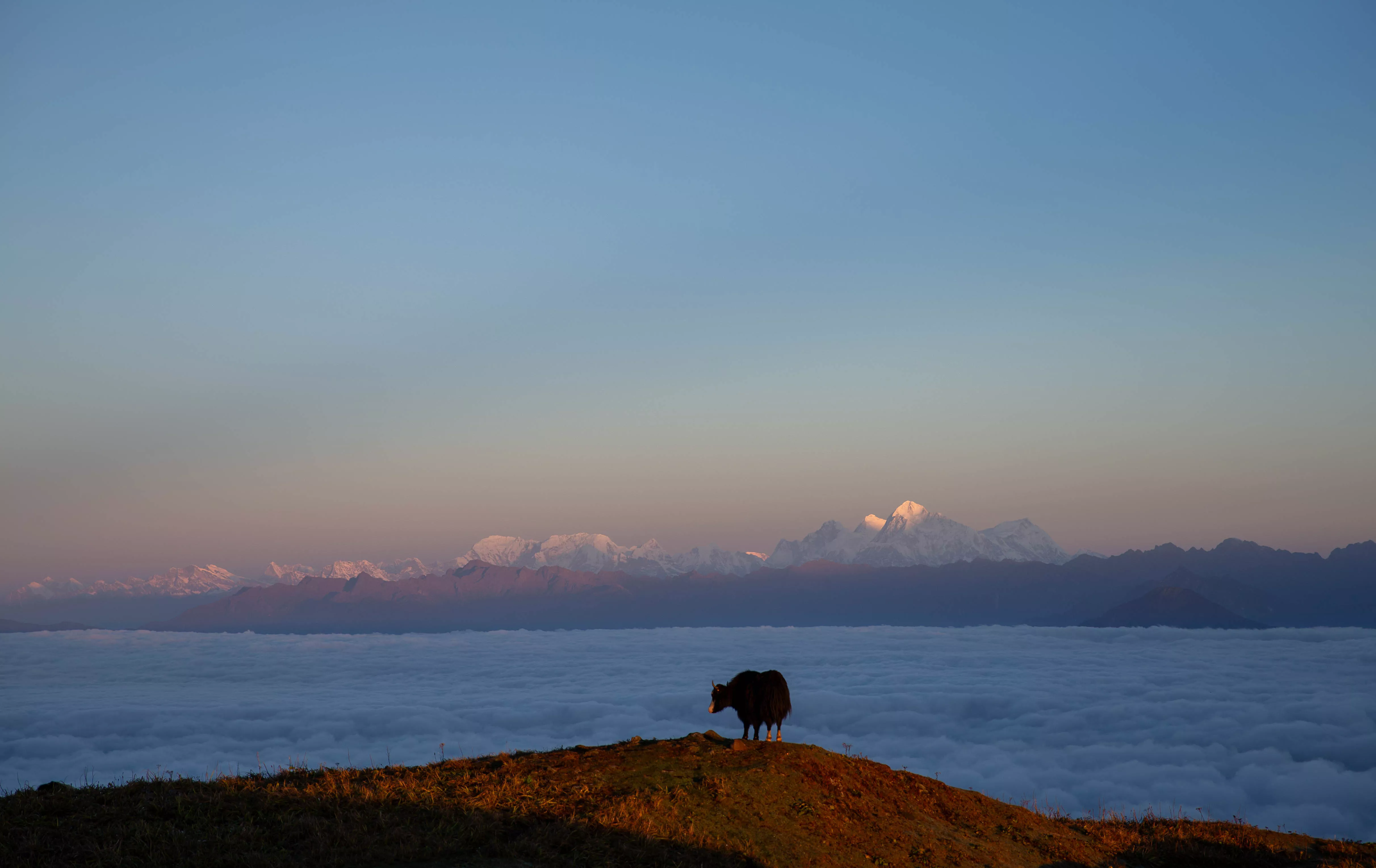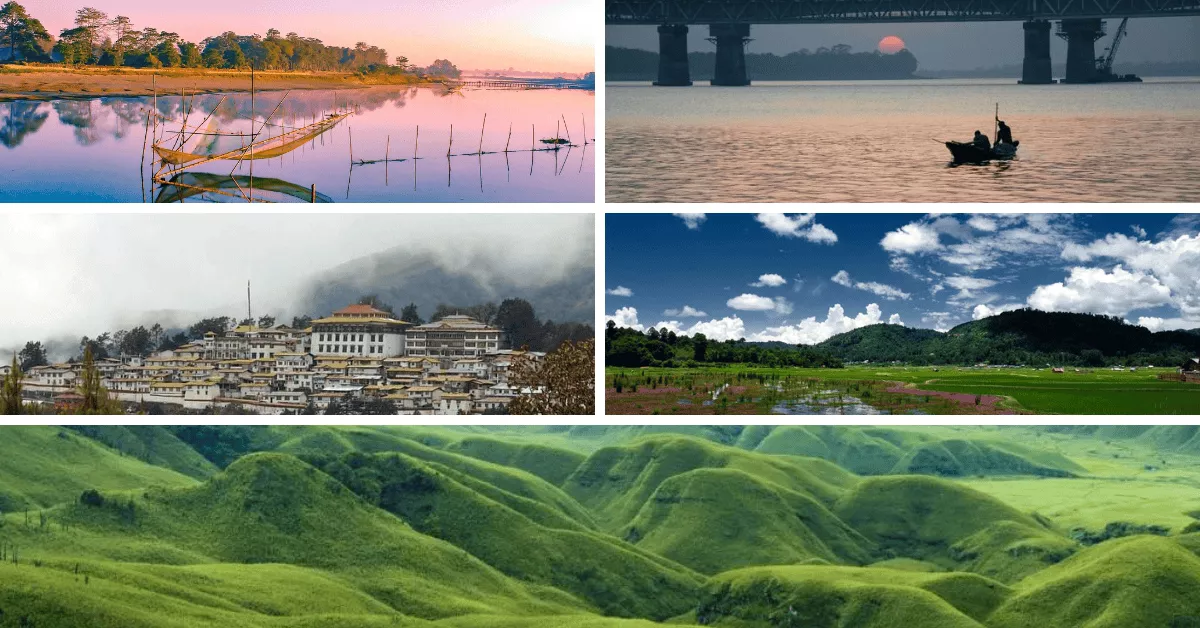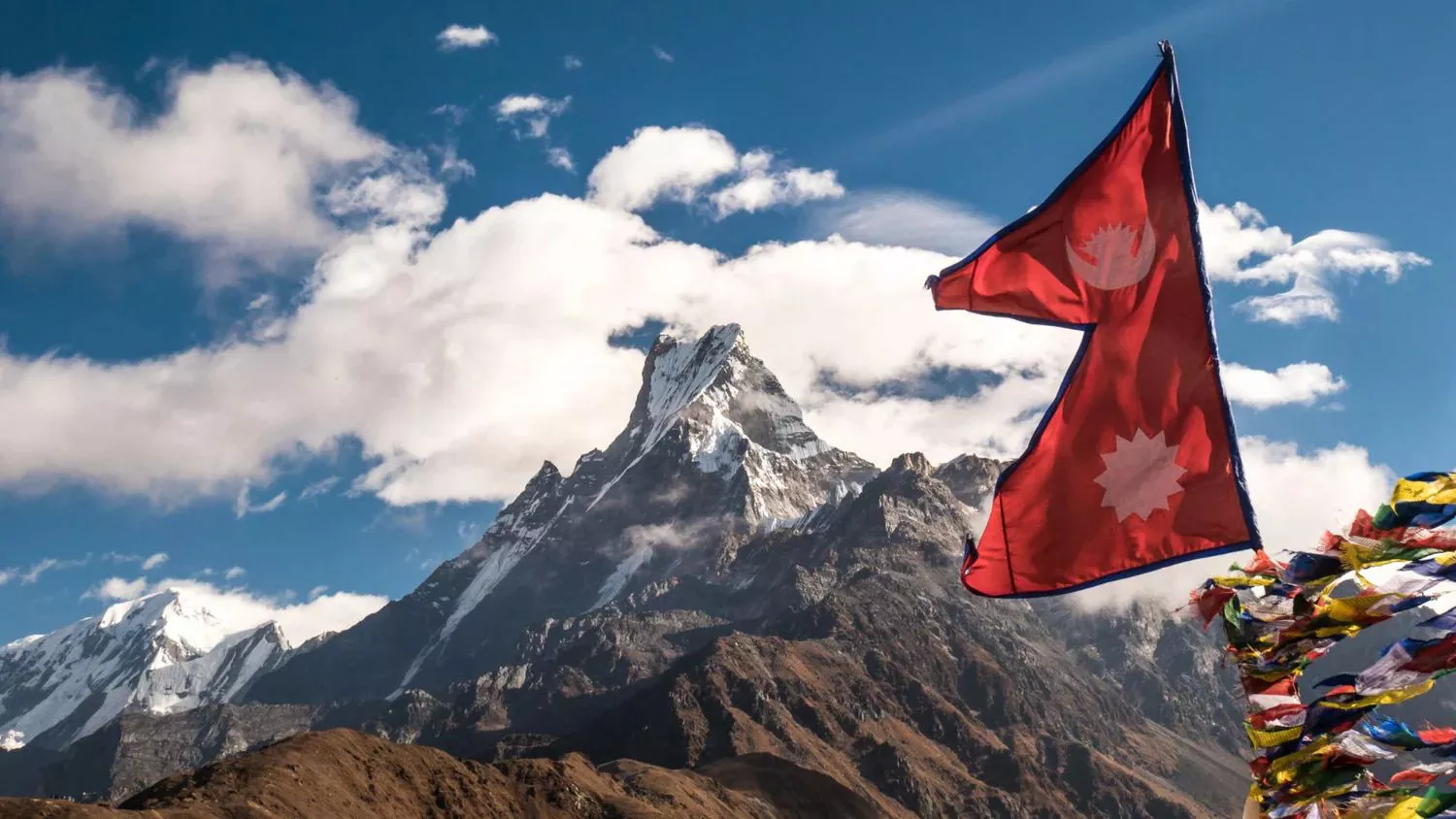
Mardi was on my bucket list recently when one of my sisters mentioned about it and shared some pictures of her trek to Mardi. Picturesque and beautiful, untouched natural chastity that was yet to be walked upon, Mardi came into light only recently. Before that, only a handful of people had visited this place. The trekking route to Mardi was officially opened in 2012 and since then, hordes of tourists have flocked to this pristine landscape. However, the number is relatively low considering other trekking routes that are constantly being travelled on. Nevertheless, the number is increasing year by year.
Mardi Viewpoint with Mt. Machhapuchhre in the background
Mardi trek is said to be one of the easiest treks in Nepal. The trekking path passes through forests, and beautiful sights on the way keep you captivated throughout the journey. The trek starts from Kande towards the Australian camp. One can choose to stay at Pokhara or Kande itself overnight so the journey can begin early morning. My friend and I took a bus from Dhading to Pokhara and stayed the night in the hustling and bustling tourist city of Pokhara.
Mardi
Trek Itinerary
Day 1:
Pokhara to Kande in Vehicle and Hiking to Australian Camp from Kande
We officially began our climb to Mardi from Kande. Hiking through villages and forests, we reached Australian Camp at 5 pm after 1.5 hours of walking. This is the first stop on this 5-day trip. Distance-wise it isn't that far from the highway, but it takes time because you’re continuously climbing uphill, which slows down your pace. The climb is beautiful. The change in weather higher up—chillier with the blowing of a cool breeze—and flora and fauna all greet you as you go along.
If you don’t want to stay at the Australian camp, you can opt to stay at a place called Deurali, which is a 15-20 min walk from the camp.
Morning view from Australian Camp
Day 2: Australian Camp to Forest Camp
The morning was something else. Greeted by the lovely sunrise that could be seen from our room followed by a range of mountains—Annapurna south, Hinchuli, and Machhapuchhre—I was awestruck by the beauty of the place. This could not have been any better. Our destination for the day was Forest camp. We'd been told it would take about 7 hours to reach the camp from Australian Camp. We reached the Forest camp at 2 'o clock in the afternoon. We reached an hour early so we decided to move ahead and reach low camp. Forest camp, as the name suggests, was somewhere in the middle of the jungle. Due to a sudden downpour, we couldn’t reach low camp and hence, had to halt at rest camp and stay overnight at a hotel.
Day
3: Rest Camp to High Camp
We woke up at 5:40 am as we planned to move early in the morning but we barely got out of bed before 7 am. The sun was out already. The Machhapuchhre could be seen clearly from the hotel we were staying in. We reached Badal Danda. This is a very cool and beautiful place that falls before you reach High Camp, 3200 m high. The flora and fauna seem to be of a different species than what we'd been seeing till low camp. The vibes are different too. The roots were paving our way through the low camp until we reached middle camp. The walk through the forest was something else. The feeling of being so close to nature provides so much peace and tranquility. The chastity of nature untouched by the modernization, very raw, and pristine, it was serenity at its best. The mists and fog never left us alone, always following us, never letting us feel the heat and tiredness along the way though our feet hurt and knees went weak so many times that we can hardly remember. It took us another 1 hour and 45 minutes to reach high camp from Badal Dada. Before reaching high camp, we came across hotel Panorama in low high camp situated on top of the hill from Badal Dada. The walk from low camp to high camp is a continuous ascent, with occasional descent from low high camp. We soon reached high camp situated at an altitude of 3550 m. The location didn’t disappoint as we were greeted by the sight of the mountains as soon as we reached there.
Day
4: High Camp to Mardi View Point
It's heart-freezing cold at high camp. We woke up at 4 am to hike to the upper viewpoint of Mardi to get a better view of the incredible mountains and feel them as close as possible. As we headed out to Mardi viewpoint, it was pitch dark and we had no lights. The trek was quite an adventure, and we made it to the viewpoint at 5 am. I can’t explain how beautiful it felt to be that close to the mountains. We could see Annapurna South, Hinchuli, Machhapuchhre, and many more. Majestic! The uphill climb to the viewpoint was not a very pleasant experience, but the view and the early sunrise, sun-kissed mountains, gentle breeze brushing through the grasses, the yaks and cattle grazing that early in the morning, and everything else, was worth all the aches we experienced to get there. I was speechless at the beauty we got to experience on this day. Hordes of tourists climbing up and down the viewpoint early in the morning were quite the view to observe. Nationals and foreigners all walking together greeting each other with either a "hello" or "namaste" was heart-warming. Soon, the incredible mountains were soon shadowed by misty clouds. Luckily, we reached on time to click some beautiful pictures to remind us of this beautiful day. We returned to high camp at 9:30 am famished. After a hearty breakfast, we set on our journey back home. We reached Siding after five hours of continuous descent from high camp. It was quite the journey back. The path that led to Siding was beautiful as it had been throughout the journey. It was just forest and nothing else. We barely met people until we found a small tea shop in the middle of the forest. The forest welcomed us with its greenery and off the chart trees that seemed twisted and turned upside down in some places like you see in some scary ghost movies.
View from Mardi Viewpoint
Almost all the trails that lead to high camp are through a forest, but there are signs marked in trees to guide people in the right direction. These signs are called NATT signs, which stand for Naturally Annapurna Trekking Trail signs. These are distinguishable by the two horizontal and parallel lines of blue and white color.
I highly recommend and encourage people to travel and experience nature at its very raw and pristine state with this trek.

